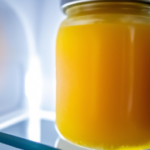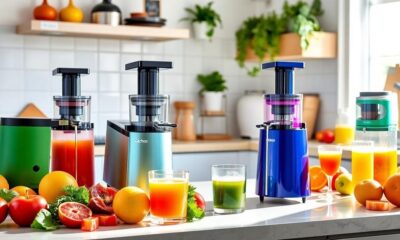Juice Tips and Tricks
How Long Can You Keep Fresh Juice

As a fan of fresh juice, I have often wondered how long it can last in the fridge before it goes bad. Some say it’s only good for a day, while others believe it stays fresh for up to a week. So, I decided to do some research and find out the true shelf life of fresh juice.
It turns out that the answer isn’t straightforward. The shelf life of fresh juice can vary depending on several factors, such as the type of juice, how it’s stored, and whether or not it’s been pasteurized.
So, in this article, I’m going to break down the different factors that affect the shelf life of fresh juice and provide tips for how to extend its longevity. Whether you’re a juicing enthusiast or just looking to incorporate more fresh juice into your diet, this information will help you make the most of your juice and avoid any potential health risks.
Key Takeaways
- Fresh juice shelf life can be affected by oxidation, high temperatures, and improper storage techniques.
- Optimal storage techniques for fresh juice include using airtight containers, keeping at a temperature between 32°F to 40°F, shielding from light, and labeling containers with freezing date.
- Fresh juice should be consumed within 3 days of making and using citric acid can prevent bacterial growth. Glass containers are best for long-term storage.
- Drinking fresh juice regularly can boost the immune system, provide essential nutrients, and aid in weight loss while flushing out toxins from the body.
The Importance of Proper Storage
You need to make sure you’re storing your fresh juice correctly if you want to enjoy it for as long as possible. Proper storage techniques are crucial in keeping the juice fresh and safe to drink.
The optimal temperature conditions for fresh juice storage are between 32°F to 40°F. This temperature range helps to slow down the growth of bacteria that can cause spoilage.
Another important factor in proper storage is to keep the juice in an airtight container. Oxygen can cause the juice to oxidize, which can result in a sour taste and a decrease in the nutrient content.
It’s important to consume the juice within three days of making it to ensure the highest quality and freshness. With these proper storage techniques, you can enjoy your fresh juice for a longer period of time and reap the benefits of a healthy drink.
Factors that affect fresh juice shelf life include the type of juice, the quality of the ingredients, and the storage conditions. By understanding these factors, you can take the necessary steps to ensure your juice stays fresh and safe to drink.
Factors That Affect Fresh Juice Shelf Life
The lifespan of a vibrant, nutrient-rich juice is influenced by various factors, such as its storage conditions and the type of ingredients used. Juice oxidation is a major factor that affects the shelf life of fresh juice. Oxygen reacts with the juice’s nutrients and enzymes, breaking them down and causing the juice to lose its nutritional value. This is why it’s important to consume fresh juice as soon as possible to reap its maximum benefits.
Another important factor is temperature control. When exposed to high temperatures, the enzymes and nutrients in fresh juice can rapidly degrade, leading to spoilage and significantly reducing its shelf life. On the other hand, storing fresh juice in a refrigerator can help to extend its shelf life by slowing down the oxidation process. It’s recommended to consume fresh juice within 24-48 hours of juicing for optimal freshness and nutritional value.
Understanding expiration dates is an important step in ensuring the freshness and safety of your food and beverages.
Understanding Expiration Dates
Now, let’s talk about how to decipher those mysterious expiration dates on your food and drink items, so you can make informed choices about what to consume. It’s important to understand that expiration dates are not set in stone and are just estimates of when the product will start to lose its quality.
In fact, the FDA doesn’t require expiration dates on most food products, except for infant formula.
There are a few ways to determine freshness of a product. The first is to use your senses. Does the juice smell or taste off? Has it changed color or consistency? These are all signs that the juice may have spoiled.
Another way to determine freshness is to check the expiration date, but don’t rely on it completely. There are common misconceptions about these dates, such as thinking that it’s unsafe to consume the product past the expiration date. However, in most cases, the expiration date is just a suggestion for when the product is at its peak quality.
Moving on to the subsequent section about tips for extending juice shelf life, one of the best ways to keep your juice fresh is to store it properly.
Tips for Extending Juice Shelf Life
When I want to extend the shelf life of my fresh juice, I always try to add citric acid to it. This not only helps preserve the juice, but it also adds a tangy flavor to it.
I also make sure to store my juice in an airtight container and keep it away from light to prevent oxidation. If I have extra juice that I won’t be able to consume within a few days, I freeze it in ice cube trays for later use.
Adding Citric Acid
If you’re looking to keep your fresh juice fresher for longer, you should definitely consider adding a bit of citric acid. Citric acid is a natural preservative that can help to prevent the growth of bacteria and fungi in your juice. Here are some other benefits of adding citric acid:
- It can help to maintain the color and flavor of your juice.
- It can help to balance the pH of your juice.
- It’s a natural alternative to adding other preservatives.
- It can be found in most grocery stores.
- It’s affordable and easy to use.
While citric acid is a great option for extending the shelf life of your juice, there are also natural alternatives available such as lemon juice or vinegar. However, regardless of the preservative you choose, it’s important to also use an airtight container to help keep your juice fresh for longer.
Using an Airtight Container
Now that we know how citric acid can help preserve the freshness of our juice, let’s talk about how to store it properly.
One way to keep fresh juice longer is by using an airtight container. This prevents air from entering and oxidizing the juice, which can cause loss of nutrients and spoilage. Airtight containers come in different materials such as plastic, stainless steel, and glass.
While plastic containers are lightweight and convenient to use, they may not be the best option for storing juice long-term. Plastic can absorb flavors and odors, which can affect the taste of the juice.
Stainless steel containers can be a good option, but they are not transparent, so it’s hard to see the contents inside. Glass containers, on the other hand, are transparent, easy to clean, and do not absorb flavors or odors. Using alternative containers like mason jars or even repurposed glass bottles can also be a great option. The benefits of glass containers include being environmentally friendly and cost-effective.
Using an airtight container is just one step in keeping your juice fresh. The next step is avoiding exposure to light, which we’ll discuss in the next section.
Avoiding Exposure to Light
To maintain the quality of your juice, it’s important to shield it from light. Exposure to light can cause oxidation, which can lead to a loss of nutrients and a change in the taste of your juice.
To avoid this, try storing your juice in a dark place, such as a pantry or refrigerator drawer. If you do need to store your juice in a visible area, consider using colored bottles to minimize the amount of light that reaches the juice. Green, amber, and blue bottles are all great options for blocking out light.
Another way to minimize oxidation and extend the life of your juice is to drink it as soon as possible after juicing. If you need to store your juice, try to consume it within 24 hours for optimal freshness. If you need to store it for longer, use airtight containers and keep it refrigerated.
In the next section, we’ll explore another method for preserving your juice: freezing.
Freezing Juice
Preserving the quality of your juice can be achieved by freezing it, which is one of the best juice preservation techniques. Freezing juice is a convenient and affordable method for maintaining its nutritional value and taste.
Freezing your juice can help you keep your juice fresh for longer. However, you need to use the right containers for freezing juice. The best containers for freezing juice are those that are airtight and leak-proof. This will help prevent the juice from absorbing any unwanted flavors or odors from the freezer. You can use glass containers or plastic containers with tight-fitting lids. It’s also a good idea to label the containers with the date of freezing so that you can keep track of how long the juice has been frozen.
When you are freezing your juice, it is important to leave some space at the top of the container. This will allow the juice to expand as it freezes. If you don’t leave enough space, the container may crack or the lid may pop off.
When you are ready to use the frozen juice, simply thaw it in the refrigerator. You can also thaw it on the counter, but this may cause the juice to lose some of its nutritional value.
In the next section, we’ll discuss the signs that your juice has gone bad.
Signs That Your Juice Has Gone Bad
If your juice smells sour or has a strange texture, it’s likely gone bad. It’s important to note that one unpreserved cup of fresh juice can only last in the refrigerator for up to 24 hours.
To prevent spoilage, it’s best to drink your juice as soon as possible after making it. However, if you can’t finish it all at once, here are some common mistakes in juice storage to avoid:
- Leaving the juice at room temperature for too long
- Not using an airtight container
- Storing the juice in a warm or sunny area
- Using a dirty juicer or not properly cleaning the equipment after use
- Adding too much sugar or other sweeteners, which can speed up the fermentation process
It’s important to take these precautions to ensure that your juice stays fresh and safe to drink.
With that being said, it’s also important to take safety precautions when handling and storing juice, which we will discuss in the next section.
Safety Precautions
Taking proper safety precautions is crucial when handling and storing your juice to prevent any potential contamination or illness. Before juicing, make sure to wash your hands and all the fruits and vegetables thoroughly.
If possible, choose organic produce to avoid any exposure to harmful chemicals or pesticides. Also, be sure to clean your juicer properly after each use to prevent the growth of bacteria.
Additionally, it’s important to consume your fresh juice as soon as possible to ensure maximum flavor and nutritional benefits. The recommended juice consumption rate is within 24 hours of juicing, as the longer you wait, the higher the risk of nutrient loss and bacterial growth.
If you must store your juice for later consumption, be sure to refrigerate it immediately and consume it within 72 hours. In the next section, we’ll discuss how to properly store different types of juice to extend their freshness and shelf life. Storing fresh juice safely is crucial to prevent the growth of harmful bacteria and to preserve its nutrient content. Always use airtight containers to minimize exposure to air, which can degrade the juice’s flavor and nutritional value. Additionally, avoid leaving juice at room temperature for extended periods, as this can accelerate spoilage.
How to Store Different Types of Juice
To store your different types of juice properly, remember to refrigerate them immediately after juicing. Juice preservation is essential to maintain the quality, freshness, and nutritional value of your drink. The optimal temperature for storing juice is between 32 and 41 degrees Fahrenheit.
Different types of juice have varying shelf lives, depending on their acidity, sugar content, and freshness. Here’s a table to guide you on how to store various juices:
| Juice Type | Shelf Life | Storage |
|---|---|---|
| Apple | 1 week | Refrigerate in airtight container |
| Carrot | 24-48 hours | Refrigerate in airtight container |
| Citrus | 3-4 days | Refrigerate in airtight container |
| Green | 24 hours | Refrigerate in airtight container |
| Watermelon | 1-2 days | Refrigerate in airtight container |
Proper juice storage can help you enjoy its benefits for longer. Speaking of benefits, did you know that fresh juice can boost your immune system and provide essential nutrients for your body? Let’s dive into it in the next section.
Benefits of Fresh Juice
Discover the advantages of incorporating fresh juice into your daily routine. It can provide your body with essential nutrients and boost your immune system. Juicing techniques have been around for centuries and have been used as a natural way to improve overall health.
Here are three nutritional benefits of fresh juice:
-
High in vitamins and minerals: Freshly squeezed juice contains a high concentration of vitamins and minerals that are easily absorbed by the body. These essential nutrients help to boost your immune system, prevent chronic diseases, and improve digestion.
-
Detoxifying and cleansing: Drinking fresh juice regularly can help to flush out toxins from your body and cleanse your system. This can help to improve your skin complexion, reduce inflammation, and increase energy levels.
-
Weight loss: Fresh juice is a low-calorie option that can help you to feel full and satisfied. Incorporating fresh juice into your daily routine can help to reduce your appetite and promote weight loss.
As you can see, fresh juice offers numerous benefits for your overall health and well-being.
In the next section, we’ll explore some delicious recipes for making fresh juice at home.
Recipes for Making Fresh Juice
Now that we’ve talked about the benefits of fresh juice, let’s move on to some delicious recipes for making your own! As someone who enjoys juicing for health, I’ve experimented with a variety of juice blends that not only taste great but also provide a range of nutrients and vitamins.
One of my favorite recipes is a green juice blend that includes kale, spinach, cucumber, celery, apple, and lemon. This combination provides a great source of vitamins A and C, as well as iron and magnesium.
Another recipe I love is a carrot and ginger juice blend, which is perfect for boosting immunity and aiding in digestion. Adding a small piece of ginger to your juice can also help reduce inflammation in the body.
With endless possibilities for juice blends, juicing can be a fun and creative way to incorporate more fruits and vegetables into your diet.
Frequently Asked Questions
What types of fruits and vegetables are best for making fresh juice?
I find that juice combinations with seasonal produce work best for making fresh juice. Fruits like apples, oranges, and berries, and vegetables like carrots and kale, can create delicious and nutrient-packed juices.
Can fresh juice be frozen for later use?
Yes, fresh juice can be frozen for later use. To maintain quality, use proper freezing techniques such as storing in airtight containers and leaving space for expansion. Preservative options include adding lemon juice or vitamin C.
How long does it take for fresh juice to lose its nutritional value?
I was surprised to learn that fresh juice can lose its nutritional value as soon as 30 minutes after processing. To maximize nutrient retention, consume it immediately or store it in an airtight container in the refrigerator. Processing can also affect its nutritional content.
Can I mix different types of juice together or should they be stored separately?
When it comes to juice combinations, it’s best to store them separately to maintain their unique flavors and nutritional benefits. Proper storage techniques include using airtight containers and refrigerating them as soon as possible.
Are there any health risks associated with drinking expired juice?
Consuming expired juice can lead to food poisoning, upset stomach, and diarrhea. To avoid these effects, check for signs of spoiled juice, such as a sour smell or taste, mold, or discoloration. Always discard expired juice.
Conclusion
In conclusion, fresh juice can be a nutritious addition to your diet, but proper storage is essential to ensure its freshness and safety. Factors such as temperature, air exposure, and acidity can affect the shelf life of your juice, and it’s crucial to understand expiration dates to avoid consuming expired juice.
By following some simple tips, you can extend the shelf life of your juice and enjoy its health benefits for longer. Did you know that according to the USDA, about 30% of all food is wasted in the United States? This statistic is staggering and highlights the importance of reducing food waste and using fresh ingredients to their fullest potential.
By storing your fresh juice properly and consuming it before it goes bad, you can do your part in reducing food waste and promoting a healthier lifestyle. Plus, with the variety of delicious juice recipes available, there’s no reason not to enjoy a refreshing glass of fresh juice every day.
Cindy thoroughly researches juicing trends, techniques, and recipes to provide readers with practical advice and inspiration. Her writing style is accessible, engaging, and designed to make complex concepts easy to understand. Cindy’s dedication to promoting the advantages of juicing shines through her work, empowering readers to make positive changes in their lives through the simple act of juicing.
Juice Tips and Tricks
How to Make Aloe Vera Juice Taste Better

Tired of the strong flavor of aloe vera juice? No problem, we’ve got the answer for you.
In this article, we’ll share some tips and tricks to make your aloe vera juice taste better. We have tried and tested various methods to enhance the flavor without compromising the health benefits.
From choosing the right juice to adding natural sweeteners and infusing with fruits and herbs, we’ve got all the information you need to transform your aloe vera juice into a delightful and refreshing beverage.
Let’s dive in!
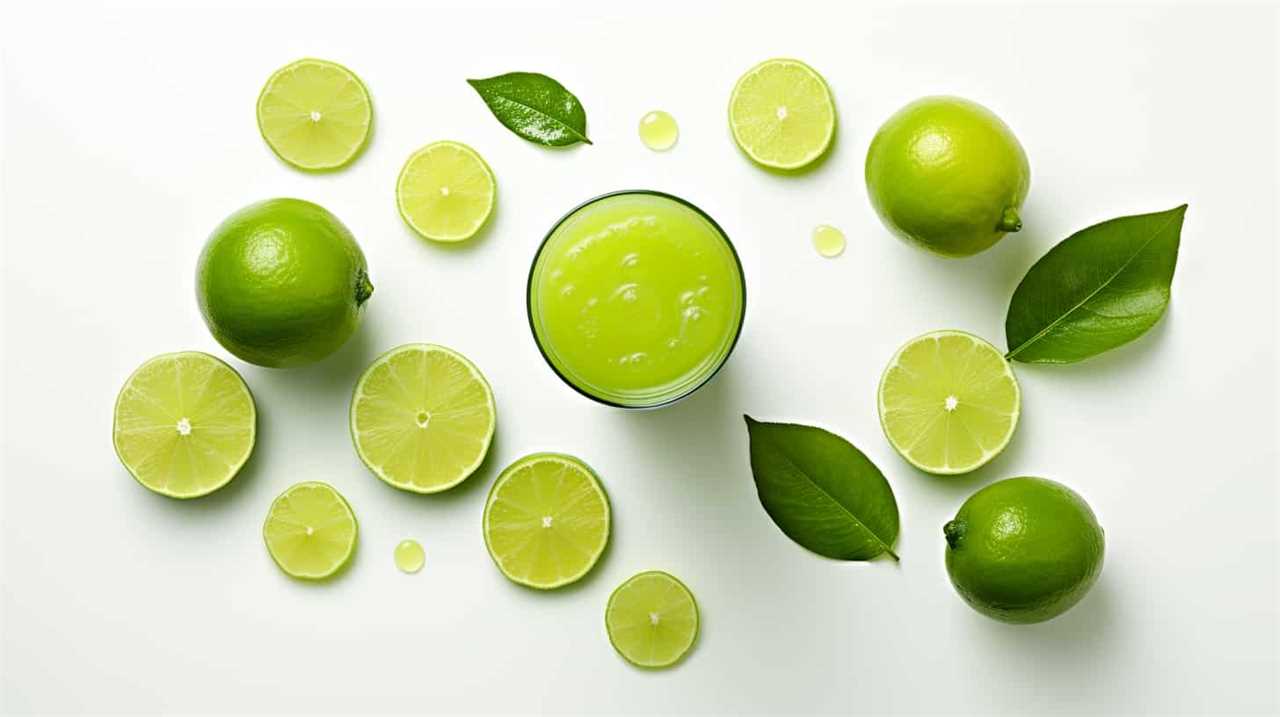
Key Takeaways
- Choose a reputable brand of aloe vera juice that prioritizes quality and uses organic, pure aloe vera.
- Avoid brands that contain added sugars or artificial ingredients.
- Use natural sweeteners like honey, agave syrup, or stevia to enhance the taste of aloe vera juice.
- Experiment with adding fruits, herbs, and other juices to create unique flavor combinations and enhance the health benefits of aloe vera juice.
Choosing the Right Aloe Vera Juice
We can enhance our experience with aloe vera juice by selecting the right brand and type for our preferences. When it comes to finding a reputable brand, it’s important to do some research and read reviews from other consumers. Look for brands that prioritize quality and use organic, pure aloe vera without any added sugars or artificial ingredients. Understanding the health benefits of aloe vera juice is also crucial in making the right choice. Aloe vera is known for its soothing properties, aiding digestion, promoting skin health, and boosting the immune system. By choosing a high-quality brand, we can ensure that we’re getting the maximum benefits from our aloe vera juice.
Now that we know how to choose the right brand, let’s move on to the next step of adding natural sweeteners.
Adding Natural Sweeteners
To enhance the flavor of our aloe vera juice, we can add natural sweeteners such as honey or agave syrup. Using alternative sweeteners not only adds sweetness but also brings unique flavors to the juice. Here are some options to consider:
- Stevia: A natural sweetener derived from the Stevia plant, it’s a zero-calorie alternative to sugar.
- Maple Syrup: This natural sweetener adds a rich and earthy flavor to the aloe vera juice.
- Dates: Pureed dates can be used to sweeten the juice while also providing essential nutrients like fiber.
In addition to using alternative sweeteners, we can enhance the flavor of aloe vera juice by adding spices and extracts. Cinnamon, ginger, or vanilla extract can add warmth and depth to the taste. By experimenting with different combinations of these natural sweeteners, spices, and extracts, we can create a flavor profile that suits our preferences.
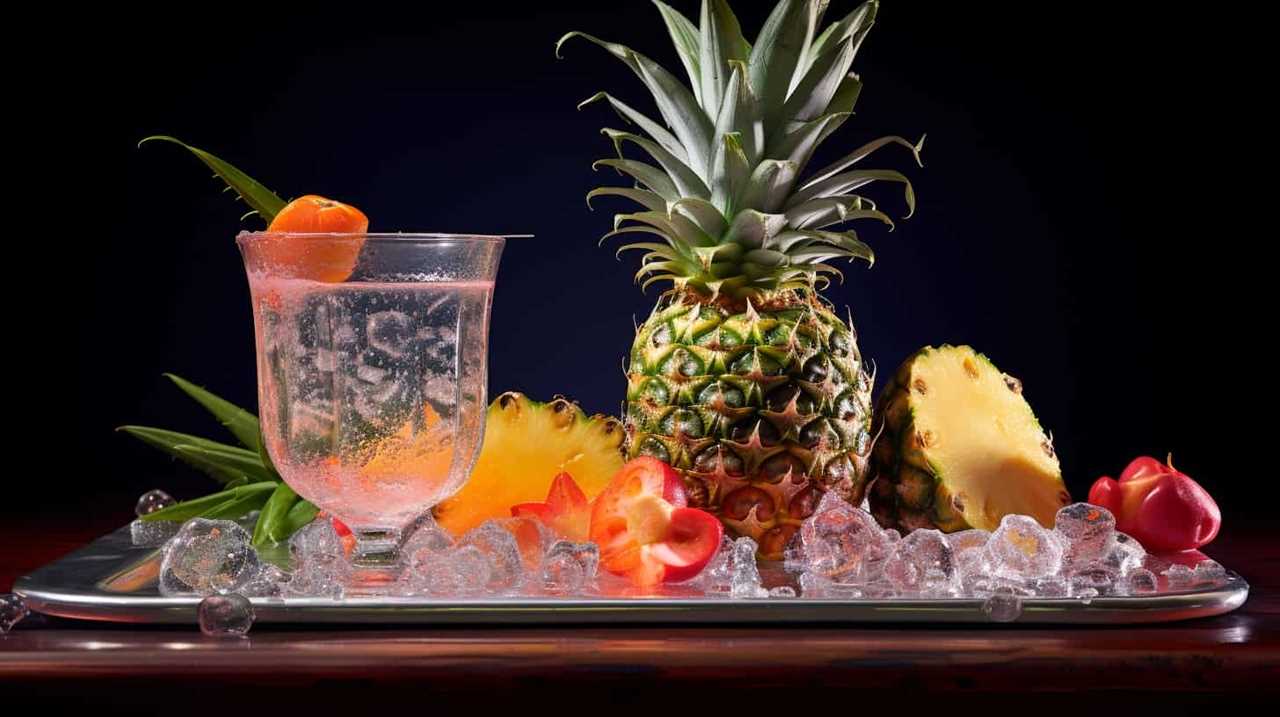
Now, let’s move on to the next section and learn how to infuse aloe vera juice with fruits and herbs to further enhance its taste.
Infusing With Fruits and Herbs
As we explore ways to make our aloe vera juice taste better, one option to consider is infusing it with fruits and herbs. Creating unique aloe vera blends by adding fruits and herbs not only enhances the flavor but also adds a touch of freshness and complexity to the juice. For example, combining aloe vera juice with lemon, mint, or berries can create a refreshing drink that’s both delicious and packed with additional nutrients. It’s similar to the ease of making lemonade with bottled juice—quick, convenient, and customizable to suit your preferences. By experimenting with different fruit and herb combinations, you can elevate your aloe vera juice experience while still reaping its health benefits.
Fruits like strawberries, pineapple, or citrus can add a burst of sweetness, while herbs like mint, basil, or ginger can provide a subtle yet refreshing twist. Exploring the benefits of herbal infusions can also be beneficial for our health. For example, adding a few sprigs of lavender can promote relaxation and reduce stress. Additionally, infusing aloe vera juice with rosemary can aid digestion and boost the immune system.
Blending With Other Juices
Let’s try mixing aloe vera juice with different fruit juices to create delicious and refreshing blends. Blending aloe vera juice with other fruits not only enhances its taste but also adds nutritional benefits to your drink. Here are three fruit juices that you can mix with aloe vera juice:

- Orange juice: Combining aloe vera juice with orange juice not only adds a tangy flavor but also boosts your intake of vitamin C, which is essential for a strong immune system.
- Pineapple juice: Mixing aloe vera juice with pineapple juice creates a tropical blend that isn’t only refreshing but also helps in digestion. Pineapple contains bromelain, an enzyme that aids in breaking down proteins and promoting better digestion.
- Watermelon juice: Blending aloe vera juice with watermelon juice creates a hydrating and refreshing combination. Watermelon is rich in water content and contains electrolytes that can help replenish your body’s fluids.
Experimenting With Flavor Combinations
While we can try various flavor combinations with aloe vera juice, it’s important to find the right balance to enhance its taste. Experimenting with different flavors can’t only make the juice more enjoyable but also enhance its health benefits.
Aloe vera juice is known for its numerous health benefits, such as boosting digestion, promoting hydration, and supporting the immune system. By adding complementary flavors, we can create a refreshing summer drink that not only tastes great but also provides a nutritional boost.
Some popular flavor combinations include mixing aloe vera juice with citrus fruits like lemon or orange, adding a splash of coconut water for a tropical twist, or combining it with cucumber and mint for a refreshing and cooling effect.
Don’t be afraid to get creative and find the flavor combination that suits your taste buds best!
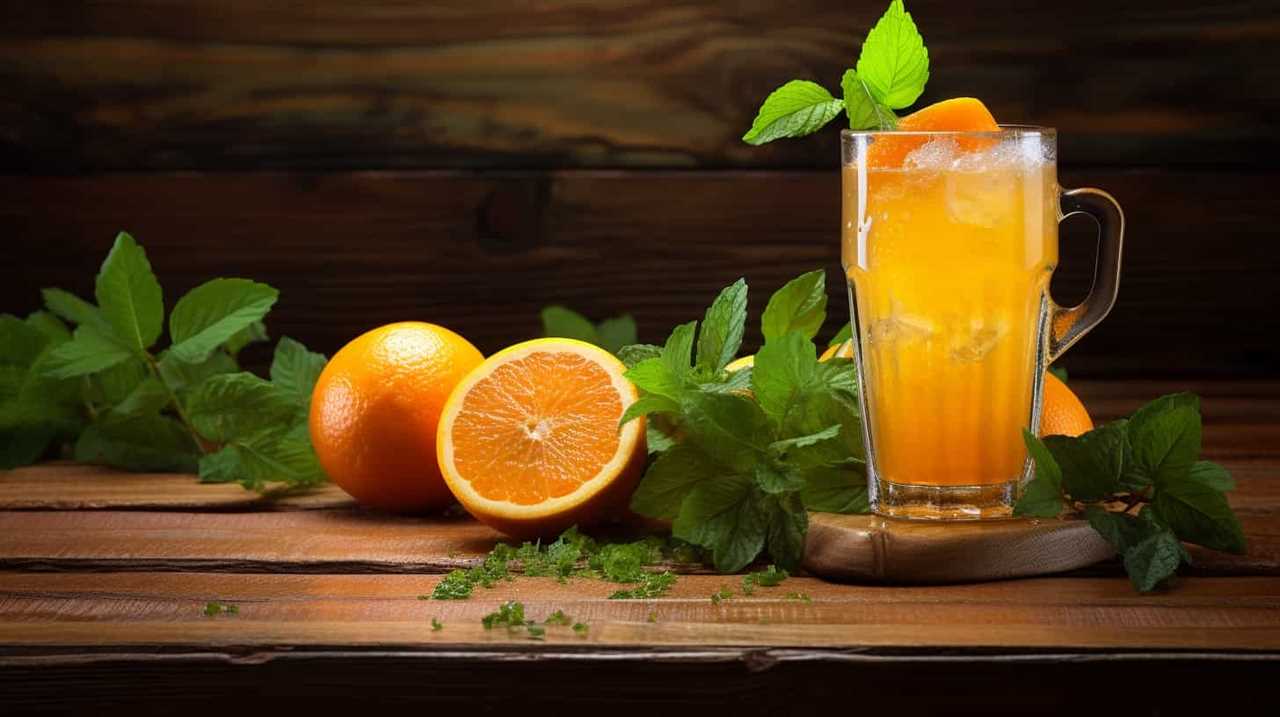
Frequently Asked Questions
Can I Use Store-Bought Aloe Vera Gel Instead of Fresh Aloe Vera for Making Juice?
Yes, you can use store-bought aloe vera gel instead of fresh aloe vera for making juice. However, it’s important to note that fresh aloe vera juice may have more health benefits due to its higher nutrient content.
How Long Can I Store Aloe Vera Juice in the Refrigerator?
Aloe vera juice can be stored in the refrigerator for up to a week. Refrigeration helps maintain the longevity and freshness of the juice, preserving its beneficial properties. It’s important to store the juice in an airtight container to prevent contamination and maintain its quality. Similarly, you might wonder *how long ginger juice lasts*; typically, fresh ginger juice can be refrigerated for about 1–2 weeks as well. Both aloe vera and ginger juices are best consumed within their shelf life to ensure maximum potency and health benefits. Additionally, freezing either juice can extend their shelf life, though some loss of nutrients and potency may occur during the process. When thinking about *how long fresh juice lasts*, it’s crucial to check for signs of spoilage, such as changes in smell, taste, or color, before consuming. To enjoy the best results, it’s always recommended to use fresh ingredients and properly store the juice to ensure you’re getting the most out of its health benefits.
Can Aloe Vera Juice Help With Digestive Issues?
Aloe vera juice can potentially help with digestive issues when taken in appropriate dosages. However, it is important to note that there may be potential side effects. It is always best to consult with a healthcare professional before starting any new supplement regimen.
Can I Use Artificial Sweeteners Instead of Natural Sweeteners in My Aloe Vera Juice?
Using artificial sweeteners in aloe vera juice may affect its taste and potential health benefits. However, natural sweeteners like honey or stevia can enhance the flavor without compromising its nutritional value.

Is It Safe to Drink Aloe Vera Juice Every Day?
Drinking aloe vera juice daily can have numerous benefits, such as improving digestion and boosting the immune system. However, consuming it regularly may also lead to potential side effects like diarrhea or stomach cramps.
Conclusion
In conclusion, making aloe vera juice taste better is easy and enjoyable.
By choosing the right aloe vera juice and adding natural sweeteners, infusing with fruits and herbs, blending with other juices, and experimenting with flavor combinations, you can create a delightful and refreshing drink.
So go ahead and unleash your creativity in the kitchen, and transform your aloe vera juice into a sensational elixir that will transport your taste buds to paradise.
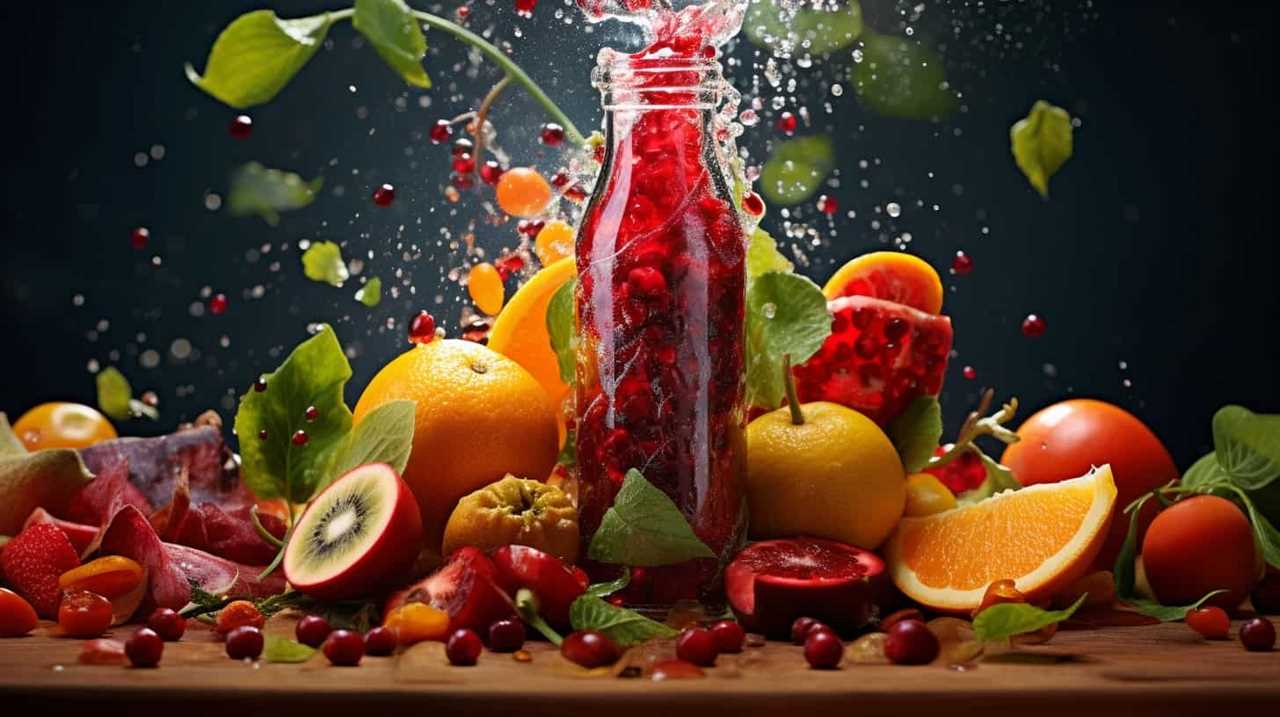
Susannah expertise lies in researching and compiling evidence-based content on juicing, nutrition, and overall health. She is committed to ensuring that The Juicery World offers accurate, up-to-date, and trustworthy information to empower readers to take control of their health. Susannah’s goal is to inspire individuals to embrace juicing as a way to nourish their bodies and live their best lives.
Juice Tips and Tricks
How to Make a Glass of Lemonade With Bottled Lemon Juice
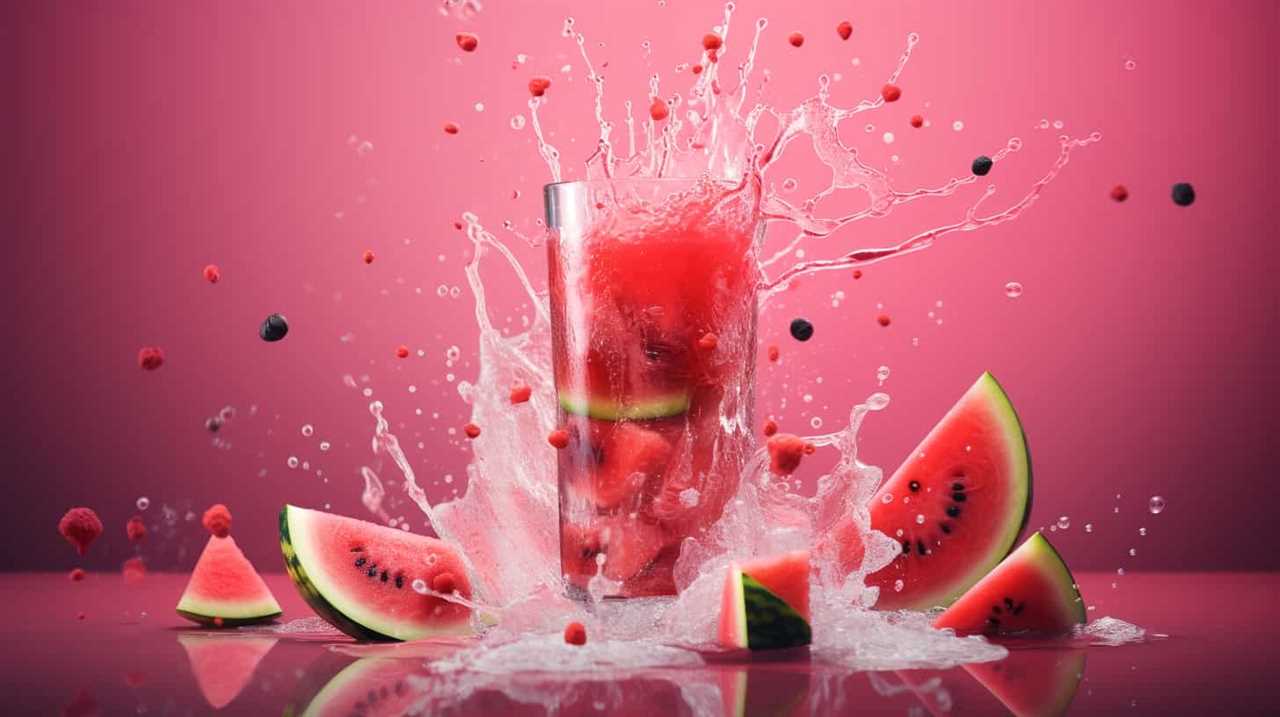
Are you craving a cool glass of lemonade to quench your thirst? Look no further! Try out our perfect recipe using bottled lemon juice that will surely please your taste buds.
In this article, we’ll guide you through the process of creating a tangy and sweet concoction that will leave you feeling refreshed and satisfied.
So grab your ingredients and let’s get started on this delightful journey of serving ourselves and others a glass of pure lemony goodness.
Key Takeaways
- Consider the storage of the bottled lemon juice (dark glass or plastic bottles, protect from light exposure, check expiration date)
- Choose a suitable pitcher and fresh lemons for enhanced flavor
- Store the lemonade concentrate in the refrigerator to maintain freshness
- Adjust the sweetness and tartness to taste with sugar or more lemon juice, and experiment with different sweeteners or additional flavors.
Choosing the Right Bottled Lemon Juice
What are the key factors we should consider when selecting the right bottled lemon juice for our lemonade?

One important factor is how the lemon juice is stored. Look for bottles that are made of dark glass or plastic, as they help protect the juice from light exposure, which can degrade its quality. It’s also important to check the expiration date to ensure freshness.
Another benefit of using bottled lemon juice is convenience. It saves time and effort compared to squeezing fresh lemons. Additionally, bottled lemon juice provides consistent flavor, as the acidity levels are standardized.
When selecting a brand, consider reading reviews and checking for certifications, such as organic or non-GMO.
Gathering the Necessary Ingredients and Tools
How can we gather all the necessary ingredients and tools to make a glass of lemonade with bottled lemon juice? First, we’ll need to collect bottled lemon juice, sugar, and cold water, as well as a pitcher and a spoon for mixing. If you prefer extra flavor, you can also gather ice and optional add-ins like mint or soda water. While preparing the lemonade, it’s easy to understand why some people wonder about other citrus drinks and may ask, “how many oranges per gallon” are needed when making orange juice instead. Once everything is assembled, combine the lemon juice, sugar, and water in the pitcher, stirring until the sugar dissolves. Feel free to adjust the sweetness or tartness to your liking, and don’t forget to add ice or any optional add-ins for an extra refreshing touch. This process might even make you curious about how much juice from oranges is needed when making fresh orange juice compared to using bottled citrus products. Once your lemonade is ready, pour it into a glass and enjoy the refreshing taste. This simple recipe can inspire you to try other homemade juices, such as learning **how to make pear juice** or experimenting with other fruit combinations. Whether you’re using fresh fruits or bottled options, creating your own beverages is a fun and rewarding way to personalize your drinks.
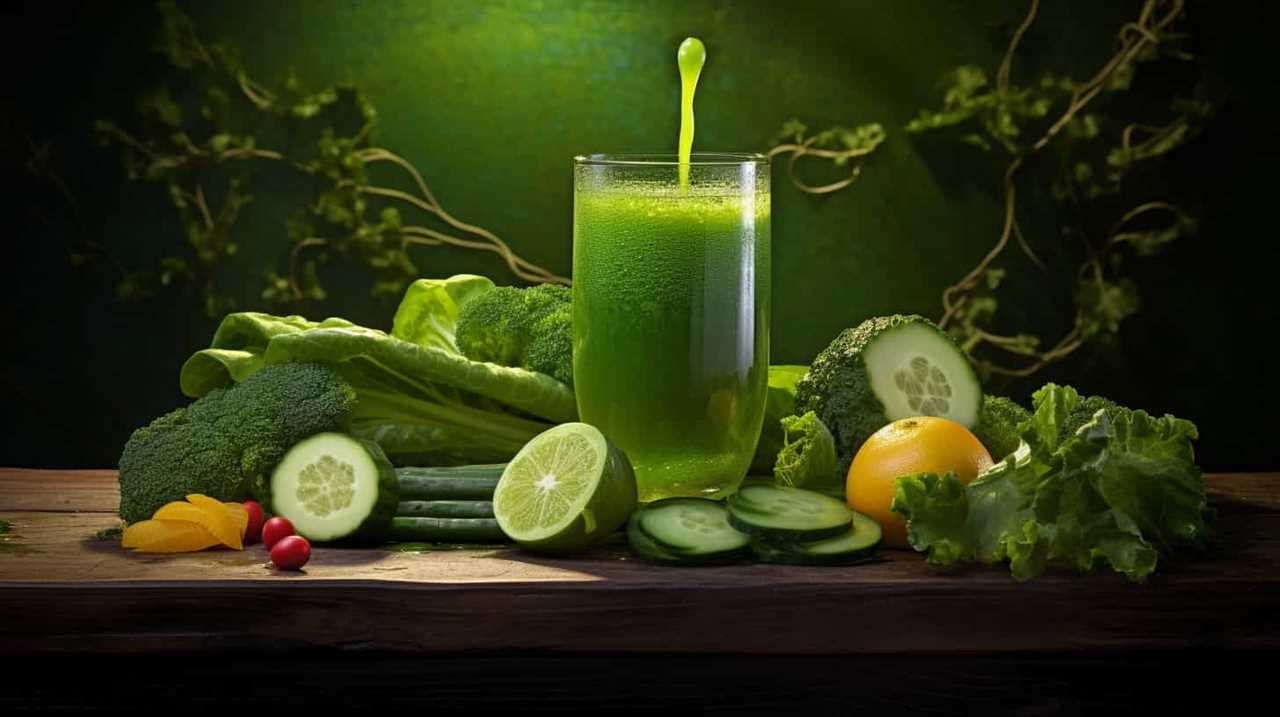
It’s important to start with the right pitcher. Look for a pitcher that’s made of glass or BPA-free plastic, as these materials won’t affect the taste of the lemonade. The pitcher should also have a lid or cover to keep the lemonade fresh and prevent spills.
Now, let’s talk about the lemons. While bottled lemon juice is convenient, using fresh lemons instead can elevate the flavor of your lemonade. Choose lemons that are firm and have a bright yellow color. Give them a gentle squeeze to ensure they’re juicy. To extract the juice, you’ll need a citrus juicer or a reamer. These tools make it easy to get every last drop of juice from the lemons.
Mixing the Lemonade Concentrate
To start mixing the lemonade concentrate, we’ll slowly pour the bottled lemon juice into the pitcher. It’s important to choose the right container for the lemonade concentrate. A pitcher with a lid or a tightly sealed container will help maintain the freshness and prevent any spills or leaks. Once the lemon juice is in the pitcher, we can move on to the next step of adding water and sweetener.
To ensure the lemonade concentrate stays fresh, it’s essential to store it properly. Keep the pitcher in the refrigerator to maintain its cool temperature and prevent any bacteria growth. If you have any leftover concentrate, transfer it to a smaller container with an airtight lid before refrigerating. This will help retain its flavor and prevent any contamination.
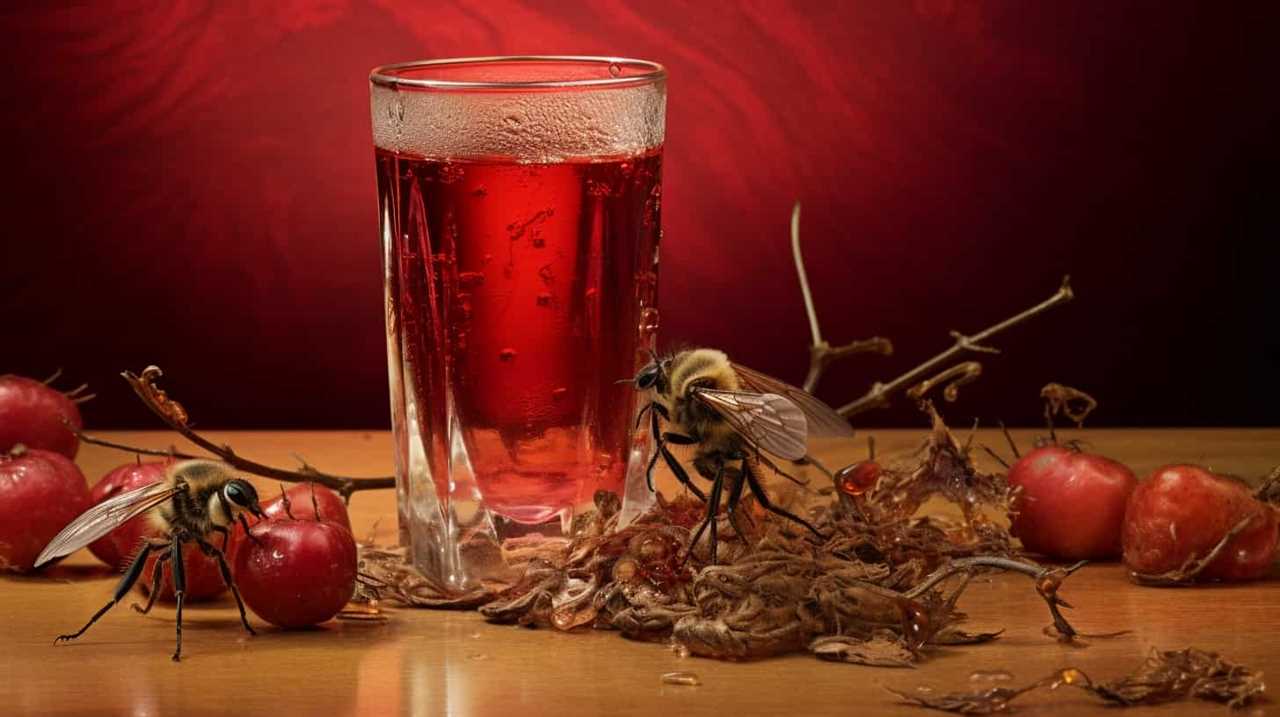
Now that we’ve mixed the lemonade concentrate, it’s time to adjust the sweetness and tartness to taste.
Adjusting the Sweetness and Tartness to Taste
We can adjust the sweetness and tartness of the lemonade to taste by adding more sugar or lemon juice, respectively. If you prefer a sweeter lemonade, simply add more sugar and stir until it dissolves completely. You can experiment with different sweeteners such as honey or agave syrup to find the perfect balance of sweetness.
On the other hand, if you want a tangier lemonade, add more lemon juice gradually, tasting as you go until it reaches your desired level of tartness.
Additionally, you can get creative with your lemonade by adding flavors like fresh mint leaves or a hint of lavender. These additions can elevate the flavor profile and create a more refreshing and unique experience.
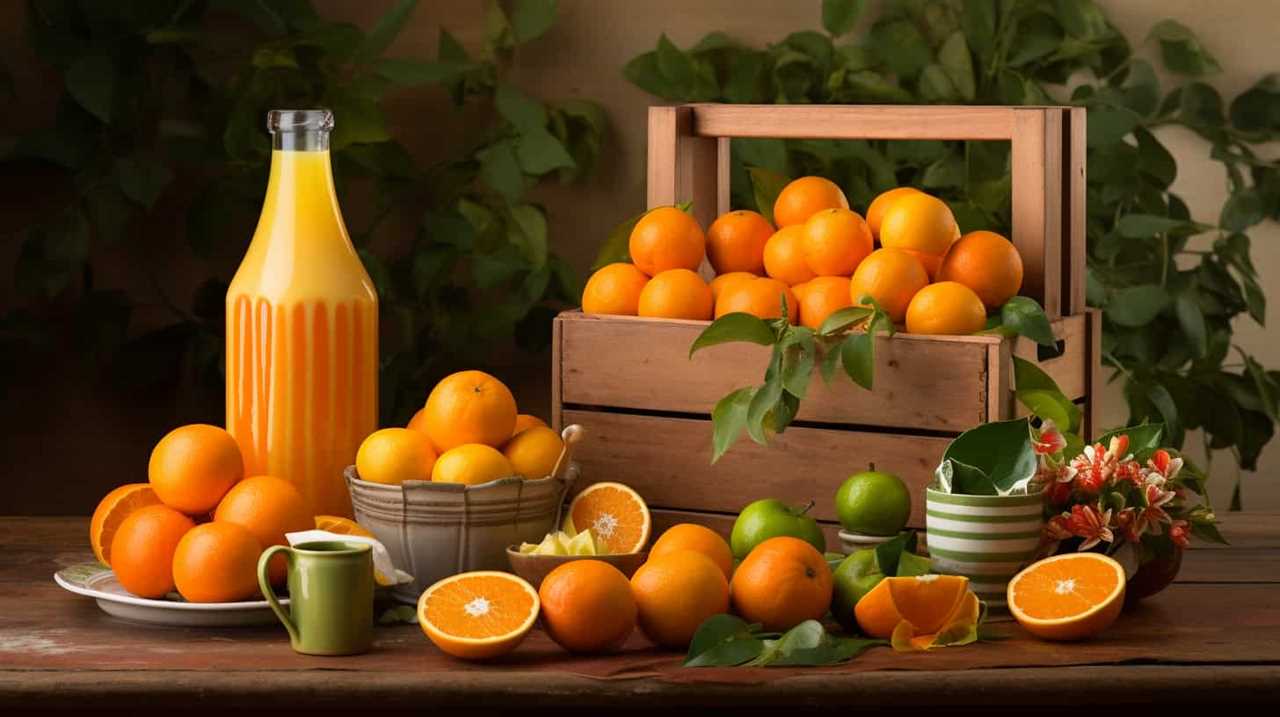
Now that we’ve adjusted the sweetness and tartness of our lemonade, let’s move on to serving and enjoying your refreshing glass of lemonade.
Serving and Enjoying Your Refreshing Glass of Lemonade
Now let’s sit back, relax, and savor our refreshing glass of lemonade.
When it comes to serving and enjoying this delightful drink, there are a few techniques and garnishing options to consider.
Firstly, serving your lemonade chilled is essential for maximum enjoyment. Ensure that you have chilled glasses or add ice cubes to the glasses before pouring the lemonade.

To add a touch of elegance, you can garnish your lemonade with a slice of lemon on the rim of the glass. For an extra burst of flavor, you could also add a sprig of fresh mint or a few berries.
Remember to gently stir the lemonade before serving to evenly distribute the flavors.
Now, take a sip, feel the refreshing tang of lemon, and let the sweet and tart flavors dance on your taste buds.
Cheers!

Frequently Asked Questions
Can I Use Fresh Lemons Instead of Bottled Lemon Juice?
Fresh lemons offer numerous benefits over bottled lemon juice. The taste of fresh lemons is unparalleled, providing a vibrant and tangy flavor. Incorporating fresh lemons into your lemonade will elevate its taste and give it a refreshing and authentic twist.
Can I Substitute Sugar With a Different Sweetener?
Substituting sweeteners in lemonade can enhance the flavor and offer health benefits. We’re knowledgeable about alternative sweeteners and can provide precise, detailed instructions on using them in place of sugar.
How Long Does the Lemonade Concentrate Need to Chill in the Refrigerator?
The chilling time for the lemonade concentrate in the refrigerator is typically around 1-2 hours. Using bottled lemon juice offers the benefit of convenience and consistent flavor for a refreshing glass of lemonade.
Can I Add Other Fruits or Flavors to the Lemonade?
Sure, we can definitely add different fruits or flavors to our lemonade. It’s a great way to experiment with unique flavors and create refreshing, personalized drinks. The possibilities are endless!

How Long Does the Lemonade Stay Fresh in the Refrigerator?
Lemonade made with bottled lemon juice can stay fresh in the refrigerator for about 5-7 days. To maximize shelf life, store it in an airtight container and keep it chilled.
Conclusion
And so, with a few simple steps and the right ingredients, a glass of refreshing lemonade is born.
Like a symphony of flavors dancing on your taste buds, this tangy elixir quenches thirst and brings joy on a hot summer day.
Just a sip transports you to a world of citrusy delight, where the sweetness and tartness blend harmoniously.

So go ahead, indulge in the art of lemonade-making and savor every drop of this sun-kissed nectar.
Cheers to the perfect glass of lemonade!
Susannah expertise lies in researching and compiling evidence-based content on juicing, nutrition, and overall health. She is committed to ensuring that The Juicery World offers accurate, up-to-date, and trustworthy information to empower readers to take control of their health. Susannah’s goal is to inspire individuals to embrace juicing as a way to nourish their bodies and live their best lives.
Juice Tips and Tricks
How to Know if Orange Juice Is Bad

We’ve all been in that situation before – reaching for a glass of orange juice and hesitating, unsure if it’s still okay to drink. Fear not! This article will give you the knowledge you need to determine for sure if your orange juice is still fresh or if it’s gone bad.
With a blend of scientific precision and practical tips, we’ll explore color changes, strange smells, off taste, texture changes, and mold or growth that may indicate spoilage.
Let’s dive in and serve ourselves a refreshing glass of certainty!
Key Takeaways
- Color changes in orange juice can indicate a loss of freshness and shelf life extension, but it doesn’t necessarily mean the juice is bad.
- Unusual or off-putting odors in orange juice, such as sour or fermented scents, can be a sign of poor quality.
- An off taste in orange juice, such as sour, bitter, or fermented flavors, suggests that the juice is spoiled.
- Texture changes in orange juice, such as pulp separation or a thicker consistency, can occur as the juice ages, so it’s important to consume it before the expiration date.
Color Changes in Orange Juice
We should be aware that color changes can indicate whether orange juice is bad.
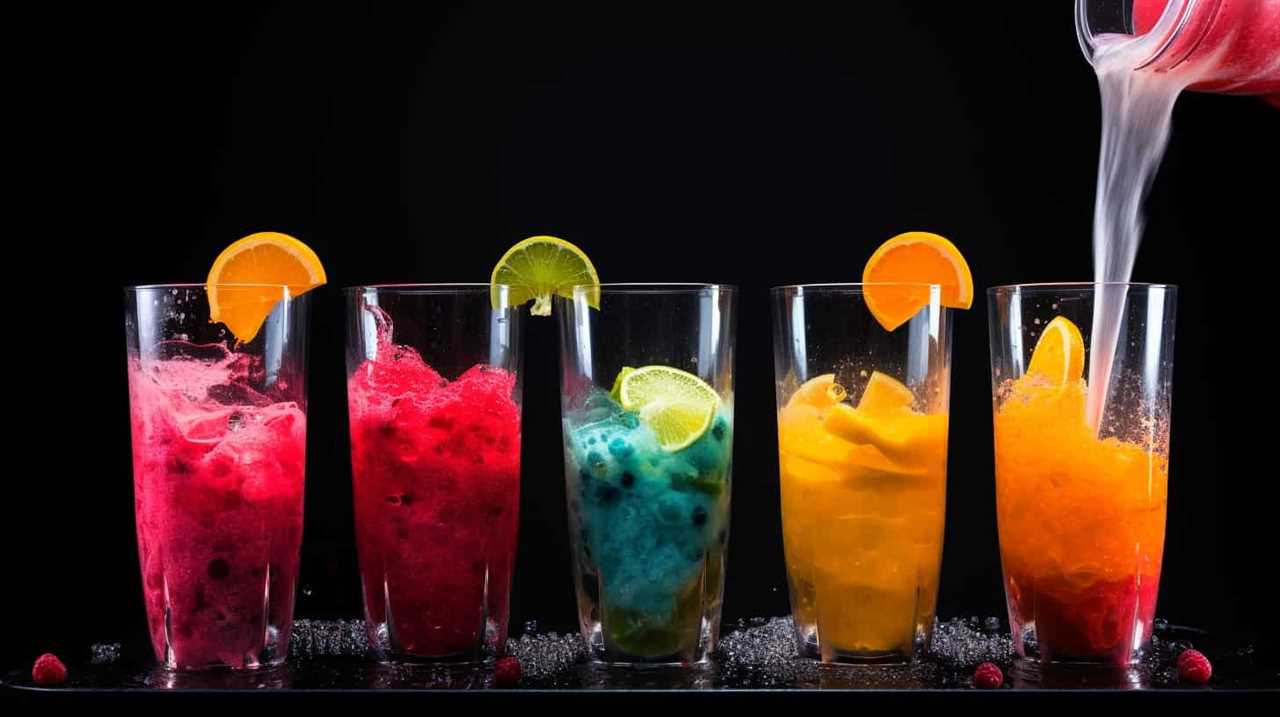
When it comes to orange juice, color is a crucial factor to consider. As oranges are exposed to air, an oxidation process occurs, which leads to changes in color. Fresh orange juice has a vibrant orange hue, indicating its freshness and high nutritional value.
However, as time passes, the juice may undergo a color change, turning dull or brownish. This change in color is a result of the oxidation process, which affects the flavor and quality of the juice. It’s important to note that while a change in color doesn’t necessarily mean the juice is bad, it does indicate that the juice is losing its freshness and shelf life extension.
Therefore, it’s advisable to consume orange juice when it’s at its freshest, as indicated by its vibrant orange color.
Strange Smells in Orange Juice
When it comes to evaluating orange juice, we should be cautious of any strange smells or odors. A fresh, pleasant smell is indicative of good quality orange juice. However, if you notice any unusual or off-putting odors, it may be a sign that the juice has gone bad. These smells can range from a sour or fermented scent to a rancid or moldy aroma.
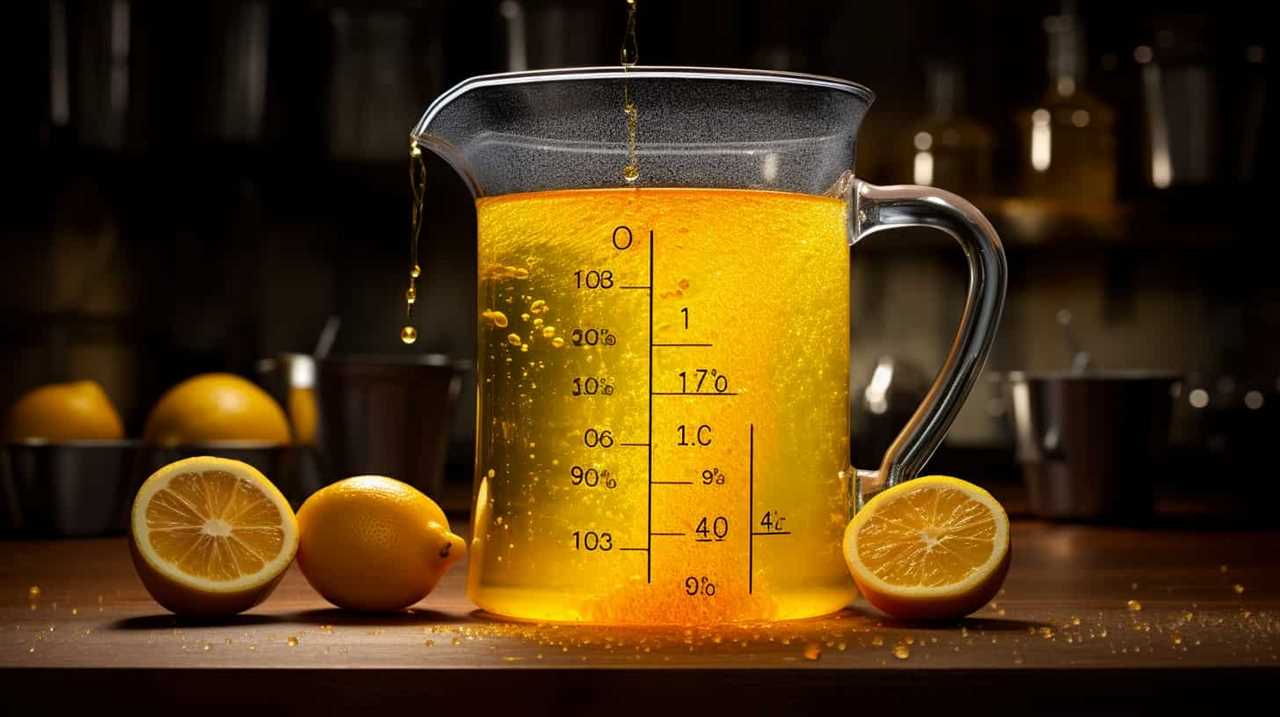
It’s important to note that while some natural variations in scent can occur due to the specific variety of oranges used, any strong or unpleasant smells should raise concerns. If you have citrus fruit allergies, it’s especially important to pay attention to the smell of orange juice, as it could indicate the presence of spoilage or contamination.
Ensuring the quality of orange juice is essential as it’s a popular beverage known for its health benefits, including being rich in vitamin C and antioxidants.
Off Taste of Orange Juice
Our taste buds can detect even the slightest hint of an off taste in orange juice, which can indicate that it has gone bad. The taste of orange juice should be fresh, tangy, and slightly sweet. If it tastes sour, bitter, or fermented, it’s likely spoiled.
One common cause of an off taste in orange juice is the use of overripe oranges. When oranges become overripe, their flavor profile changes, resulting in a less pleasant taste. Another factor to consider is the expiration date. Orange juice that has passed its expiration date is more likely to develop an off taste. It’s important to check the expiration date before consuming orange juice to ensure its freshness and quality. Additionally, improper storage conditions, such as leaving the juice at room temperature for extended periods, can lead to the development of unpleasant flavors. Storing orange juice in the refrigerator helps maintain its freshness for longer. For those exploring different juice options, aloe vera juice flavor tips suggest pairing tart juices with milder flavors to balance the overall taste.
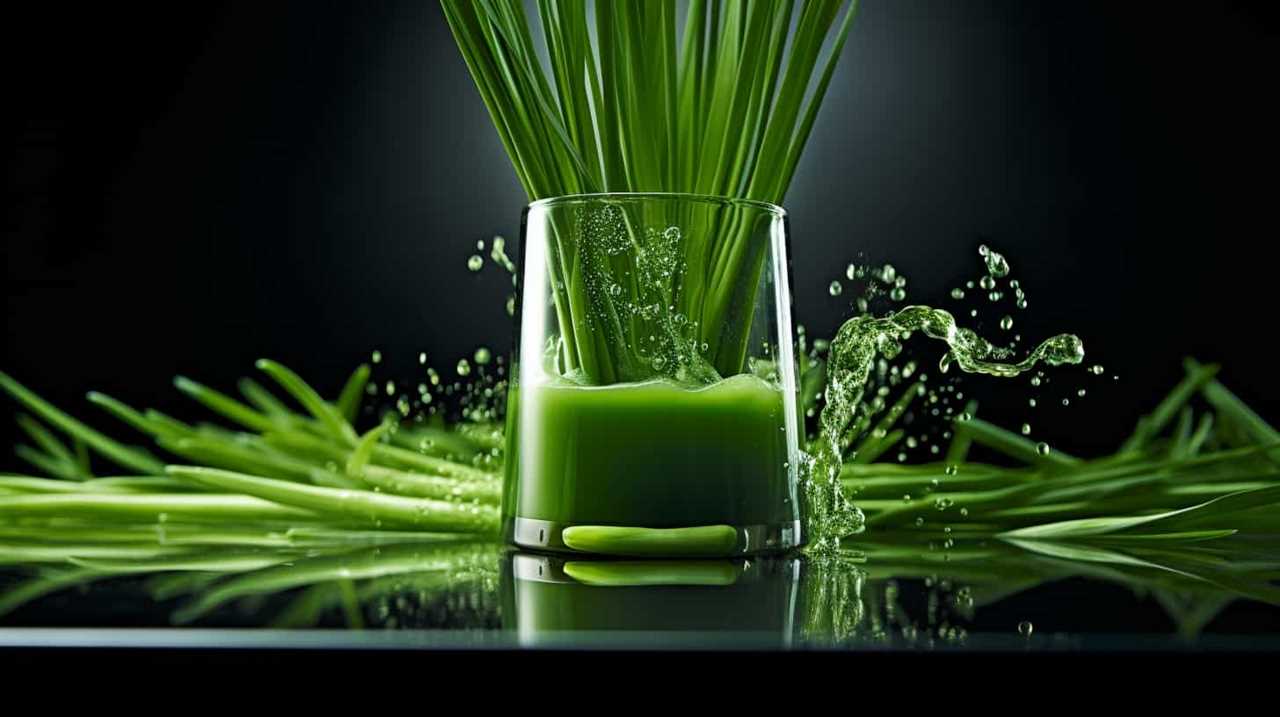
Now, let’s move on to discuss the texture changes in orange juice.
Texture Changes in Orange Juice
As we explore the texture changes in orange juice, it’s important to note that certain factors can cause it to become thicker or develop sediment. One common texture change in orange juice is pulp separation, where the pulp separates from the liquid and settles at the bottom. This can occur naturally over time, as the pulp particles become denser and sink.
Another factor that can affect the texture of orange juice is the expiration date. As orange juice ages, it may start to develop a thicker consistency and even form sediment. This is a result of the natural breakdown of the juice’s components. Therefore, it’s crucial to check the expiration date on orange juice and consume it before it reaches its expiration date to avoid any undesirable texture changes.
Mold or Growth in Orange Juice
We need to be aware of the possibility of mold or other growth occurring in orange juice. Mold can develop in orange juice if it isn’t stored properly or if it has passed its expiration date.

To prevent mold growth, it’s important to follow these steps:
- Store orange juice in the refrigerator at a temperature below 40°F (4°C).
- Check the expiration date on the bottle before consuming. Discard any orange juice that has expired.
- Keep the container tightly sealed to prevent air and moisture from entering, as these can promote mold growth.
Regularly inspecting orange juice for any signs of mold or unusual growth is essential. If you notice any discoloration, a strange odor, or visible mold, it’s best to discard the juice to avoid any potential health risks.
Frequently Asked Questions
Can Orange Juice Go Bad if It’s Stored in the Freezer for Too Long?
Frozen orange juice can potentially lose its nutrients and change its taste if stored in the freezer for too long. It is important to check for signs of spoilage before consuming it.
How Long Can Orange Juice Stay Fresh in the Refrigerator Once It’s Opened?
Once opened, orange juice can stay fresh in the refrigerator for about 7-10 days. To maintain its freshness, store it properly by keeping it tightly sealed and at a consistently cold temperature. If the orange juice develops an off odor, flavor, or appearance, it’s best to discard it to avoid any potential health risks. Factors like exposure to air and varying temperatures can influence how long orange juice lasts, so it’s crucial to handle it with care. Always check the expiration date as a general guide, but remember that proper storage can extend its freshness slightly. Additionally, avoid leaving the orange juice out at room temperature for extended periods, as this can significantly shorten how long orange juice lasts. Freezing the juice can be another option to extend its shelf life, but be aware that this may alter its texture and taste once thawed. By following these precautions, you can ensure your orange juice stays fresh and safe to consume.
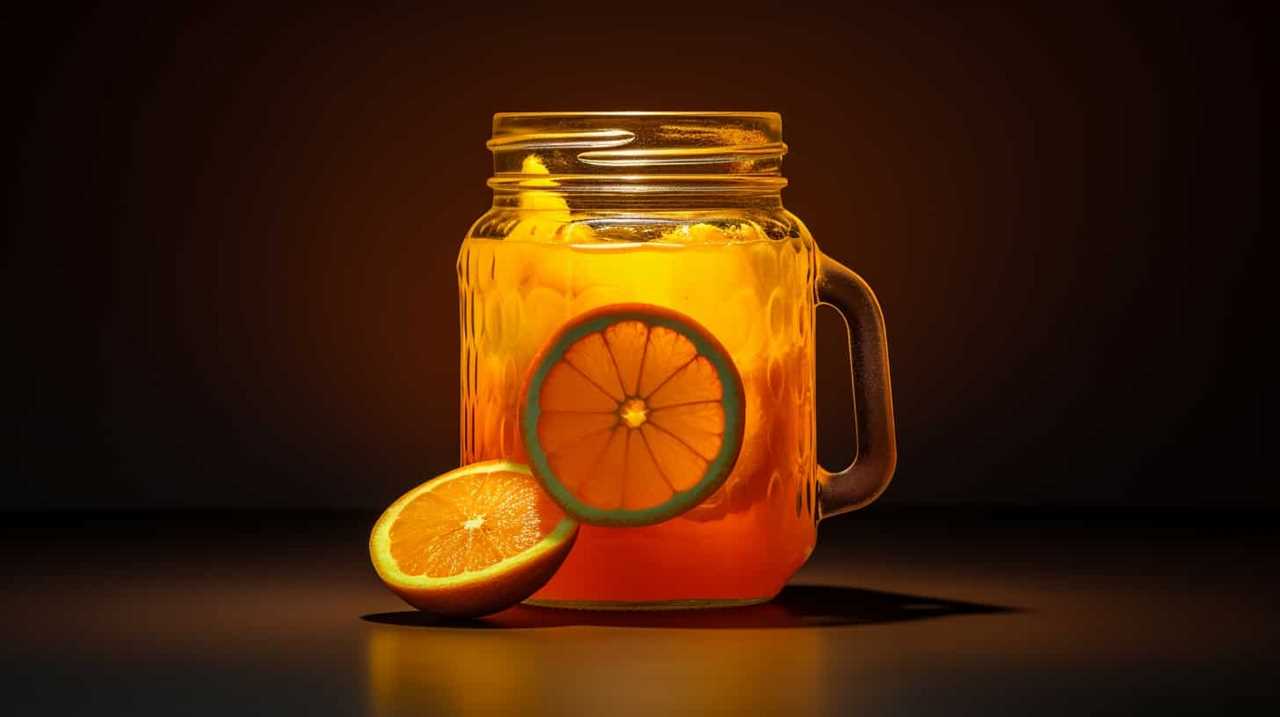
Is It Safe to Consume Orange Juice That Has Been Left Out at Room Temperature Overnight?
Left out orange juice may not be safe to drink as it can harbor harmful bacteria. Signs of spoiled orange juice include a sour smell, mold growth, and a change in color or taste.
Can Orange Juice Develop Harmful Bacteria if It’s Past Its Expiration Date but Still Looks and Smells Fine?
Orange juice can cause food poisoning if it develops harmful bacteria, even if it looks and smells fine. Signs of spoiled orange juice include a sour smell, mold growth, and a change in color or taste.
Does the Nutritional Value of Orange Juice Decrease as It Starts to Go Bad?
As orange juice goes bad, its nutritional value decreases. The longer it sits on the shelf, the more nutrients it loses. Signs of spoilage include a sour smell, off taste, and mold growth.
Conclusion
In conclusion, determining if orange juice is bad requires careful observation of color changes, strange smells, off taste, and texture changes. Just like a detective investigating a case, we must rely on our senses to detect any signs of spoilage.
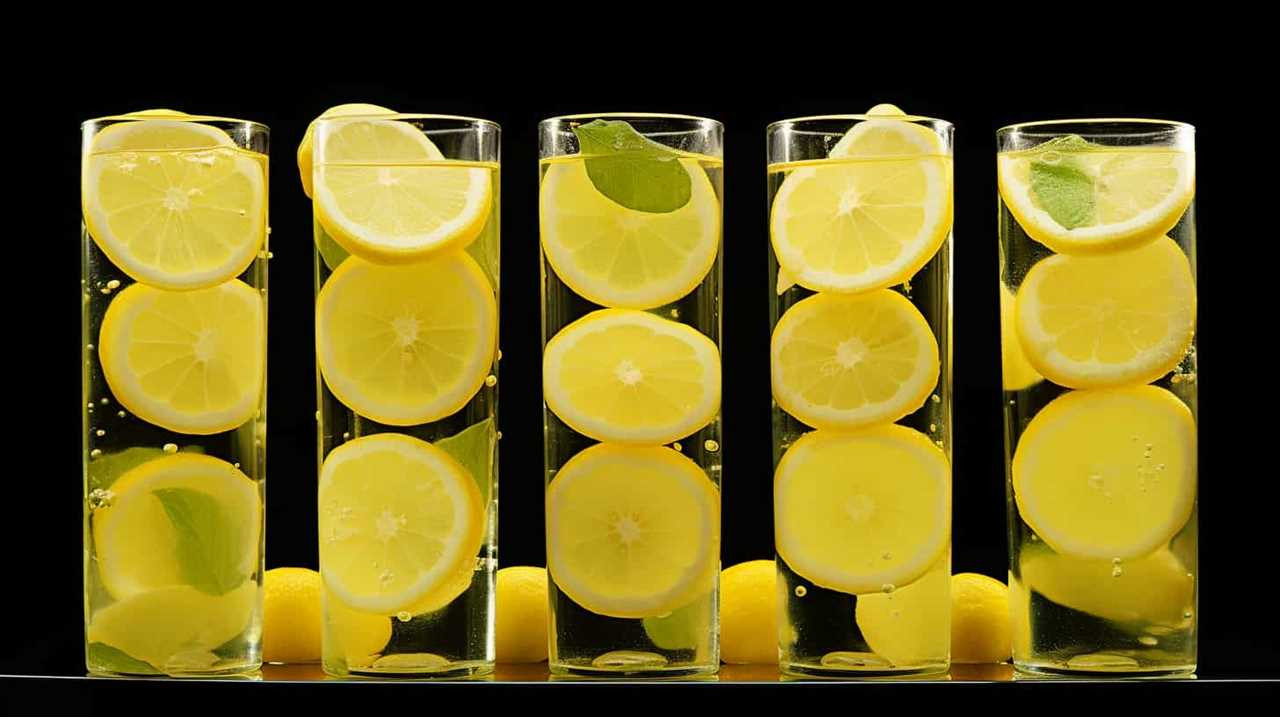
If we detect mold or growth in the orange juice, it’s a clear indication that it’s no longer safe to consume. By remaining vigilant and attuned to these indicators, we can ensure that our orange juice is always fresh and enjoyable.
Susannah expertise lies in researching and compiling evidence-based content on juicing, nutrition, and overall health. She is committed to ensuring that The Juicery World offers accurate, up-to-date, and trustworthy information to empower readers to take control of their health. Susannah’s goal is to inspire individuals to embrace juicing as a way to nourish their bodies and live their best lives.
-

 Vetted2 months ago
Vetted2 months ago15 Best Juices for Diabetics: Refreshing Options That Won’t Spike Your Blood Sugar
-

 Vetted2 months ago
Vetted2 months ago15 Best Decaf Coffee Options for Flavor Lovers Who Need a Caffeine Break
-

 Vetted2 months ago
Vetted2 months ago15 Best Espresso Ground Coffees to Elevate Your Morning Brew
-

 Vetted2 months ago
Vetted2 months ago15 Best K-Cup Coffee Pods for a Perfect Brew Every Time
-

 Vetted2 months ago
Vetted2 months ago15 Best Beans for Espresso: A Guide to Perfecting Your Brew
-

 Vetted2 months ago
Vetted2 months ago15 Best Kona Coffees to Savor the Rich Flavors of Hawaii
-

 Vetted2 months ago
Vetted2 months ago15 Best Inexpensive Espresso Machines That Brew Quality Coffee on a Budget
-

 Vetted2 months ago
Vetted2 months ago15 Best Cold Brew Coffees to Keep You Refreshed All Summer Long






